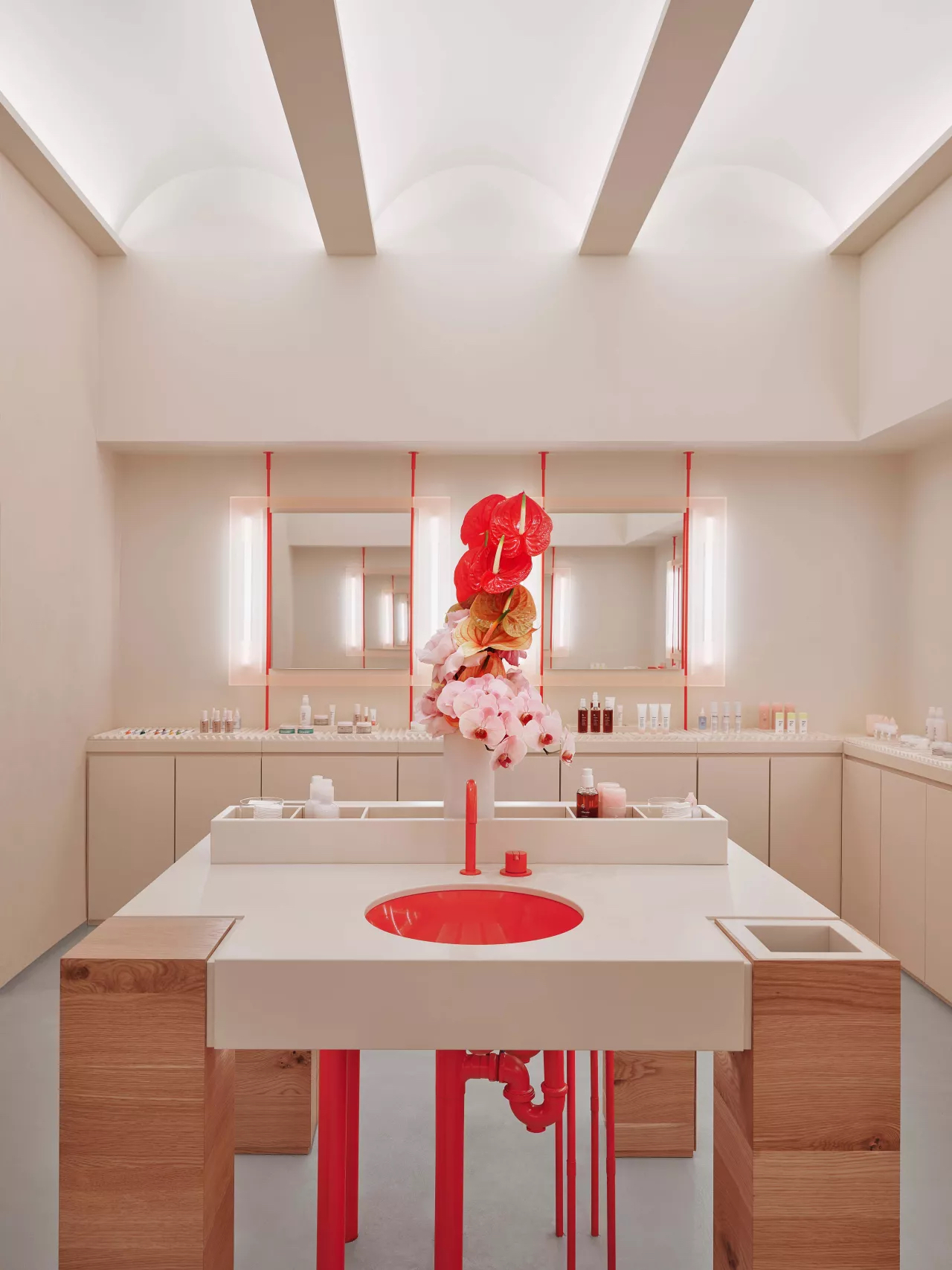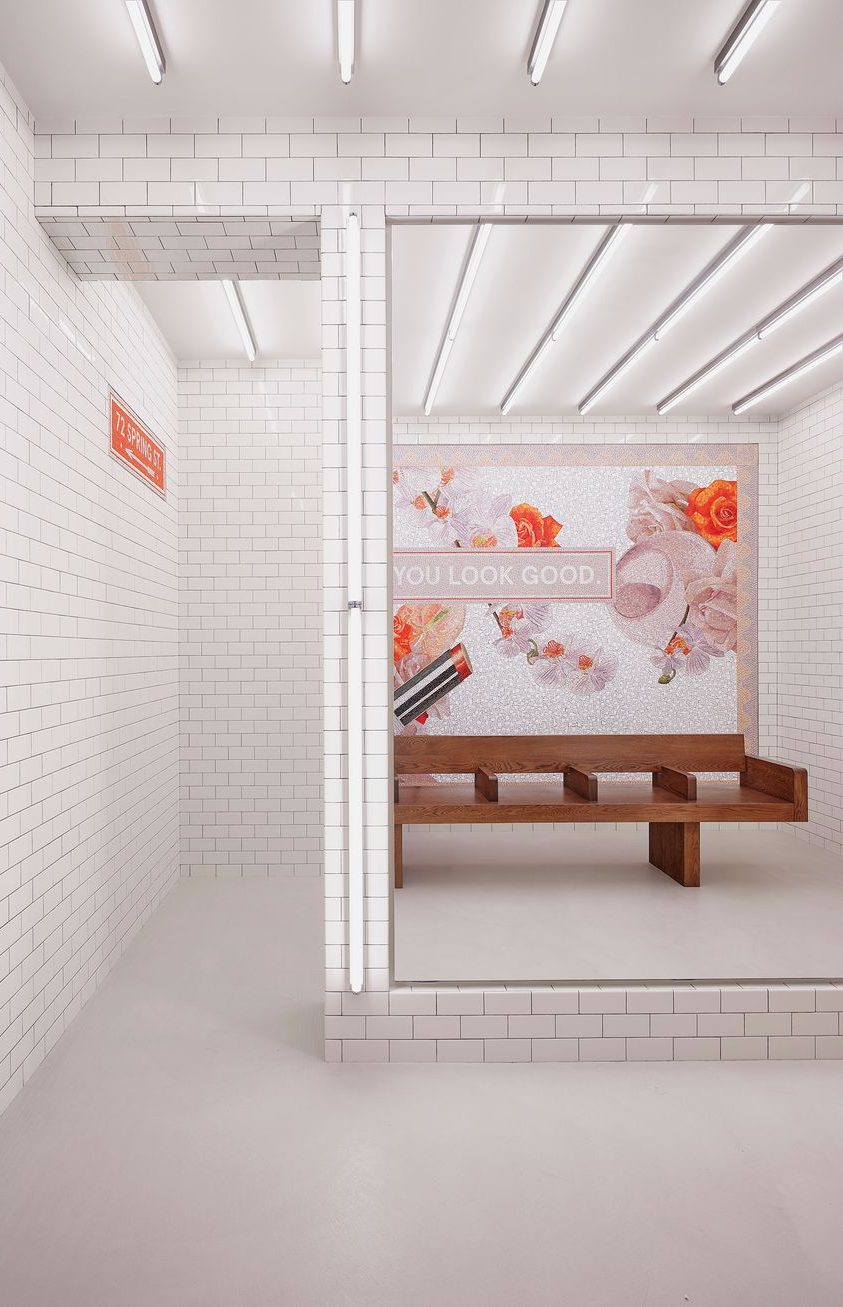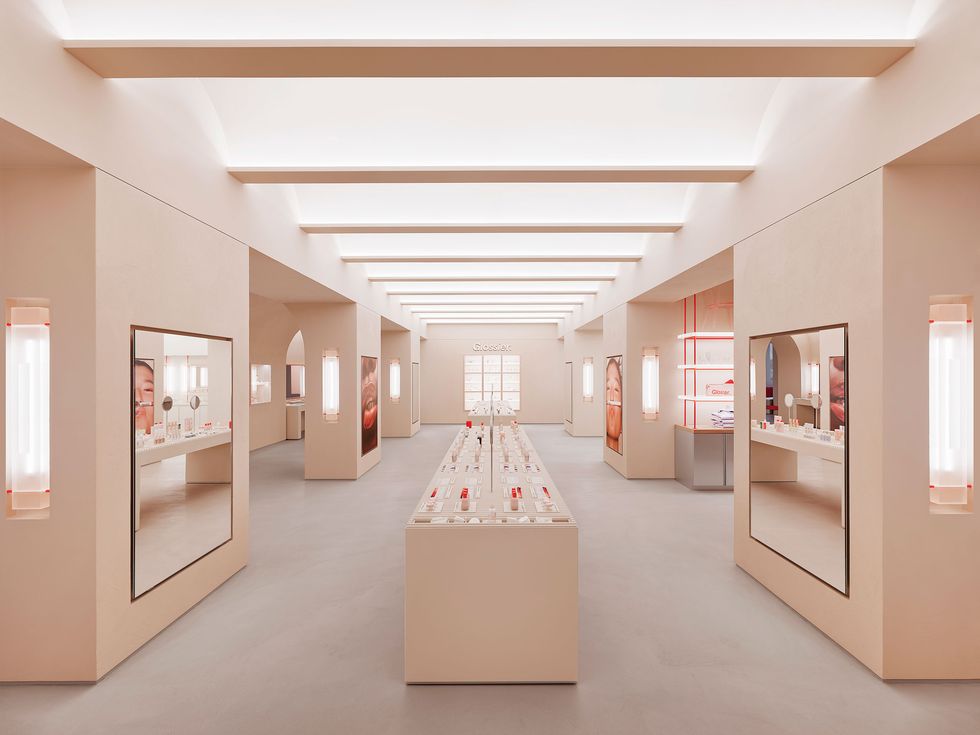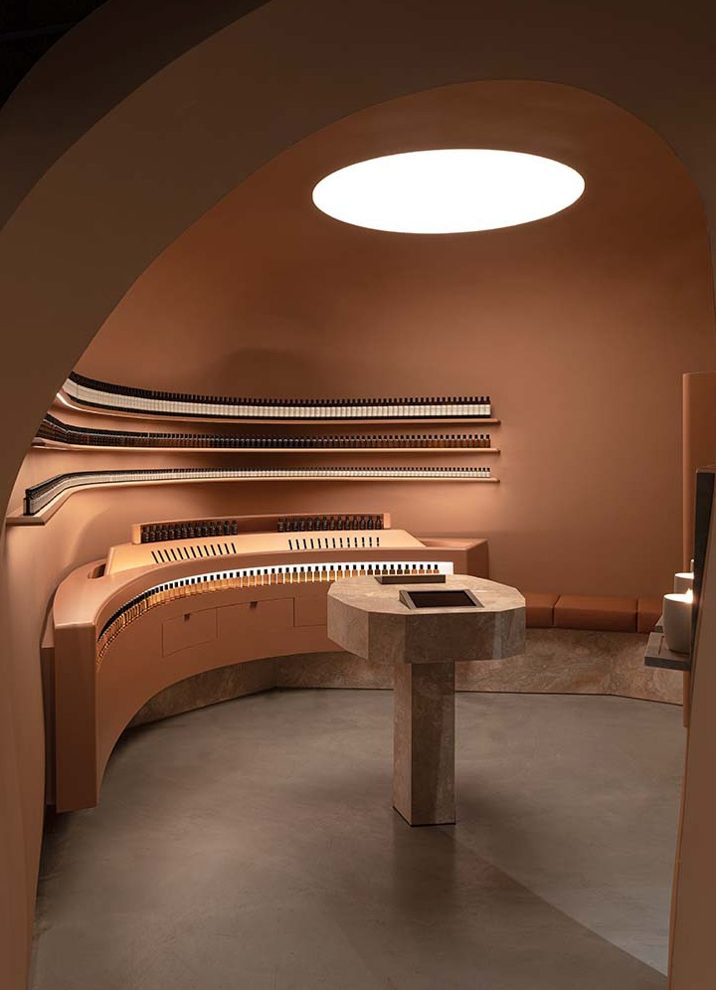At a time when retail is undergoing digital transformation, the beauty sector is defying the odds by continuing to invest in inspirational physical storefronts. Moving forward, experiential retail will play a vital role in building loyalty among the category’s discerning consumers.
Beauty has always been a ‘touch and try’ business. Following several years of exceptionally strong online sales, many of the core tenets of beauty retail remain rooted in personal touch and physical immersion. Standout brands are, as a result, leaning into design-led storytelling and sensory engagement in a broader hyper-physical renaissance.
As much as 57 per cent of UK adults prefer to purchase their premium beauty products in-store. For this reason, beauty is something of an outlier. When London’s Battersea Power Station reopened as a luxury retail destination in October 2022, it featured no less than eleven beauty stores. LVMH, meanwhile, is betting on bricks-and-mortar with Sephora’s re-emergence in the UK. Although e-commerce will continue to hold promise, spaces with an emphasis on wraparound experience, education and content creation are thriving.


Fine-tuning tactile immersion
It is perhaps ironic that Glossier, a brand born on the internet, has so successfully carved out a niche for immersive interiors powered by its own take on tactility. The brand, however, does at least play with the feedback loop between the digital and physical by making its retail environments decidedly photogenic. As part of its new retail strategy, Glossier has debuted an upgraded New York flagship that shows how a well-crafted physical storefront can be used to forge a distinctive experience through high-concept design and elevated materiality.
At its revamped SoHo flagship, the Glossier team has taken hints from the New York subway, fusing their signature aesthetic with subtle nods to the city. Featuring barrel-vaulted ceilings, arched halls, plush curved sofas, and circular tables, the dynamic design blends brand history with scaled-up details from its product ranges. The effect is elegant yet characteristically playful. From the textures of the wave-like product trays to bright red accents that create layers of visual intrigue, a heightened refinement abounds.
In Boston, Glossier’s new permanent outpost exudes a slightly different vibe. Custom-made furniture and fittings, such as archways trimmed with pale green moulding, reference the city’s historic architecture and collegiate fashion. By designing their stores to reflect the local culture in this way, Glossier can create a stronger sense of community and connection.


Elevated sensorial escapism
In search of new ways to compel and captivate shoppers, brands are also activating the senses to counteract rising digitalisation. Consider Aesop’s Sensorium rooms – a novel fragrance experience with the goal of creating an analogue space focused solely on scent. Aesop now has versions of the concept in three major stores in Sydney and London. Each iteration is a space-within-a-space. This layering of zones within the stores has been thoughtfully designed to echo the layers of fragrances themselves, allowing customers to move through the shops with a sense of unfolding curiosity.
The secluded area presents the brand’s range of eau de parfums, candles, and home fragrances, bolstered by displays of raw ingredients. At the heart of every Sensorium is an infusion chamber, known as the Fragrance Armoire, where people can imbue a piece of clothing with an Aesop fragrance of their choice, and envelop themselves in the brand’s olfactory world.